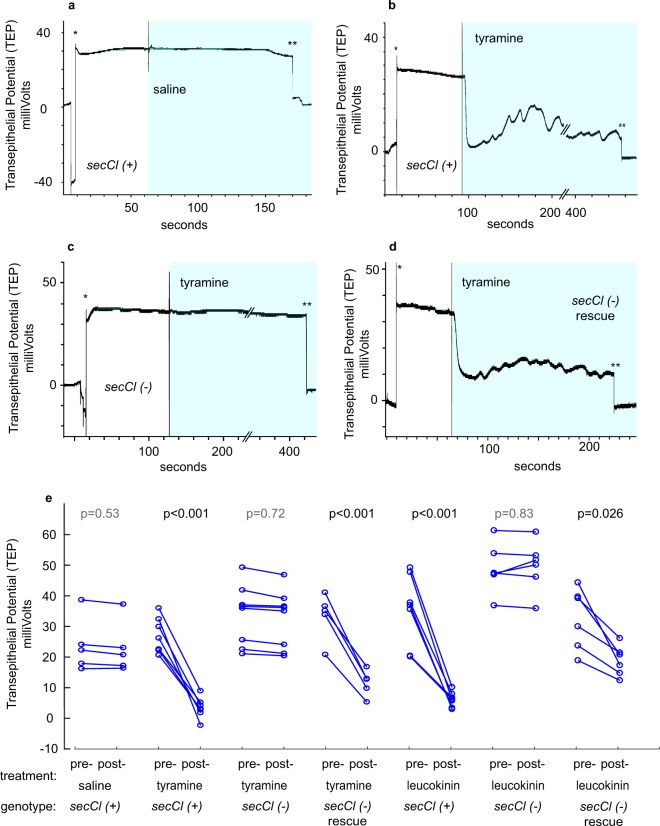Figure 5.
secCl is necessary for the decrease in transepithelial potential in response to tyramine and leucokinin. Responses of the transepithelial potential (TEP) to tyramine. (a–d) Recordings of TEP in isolated Malpighian tubules. ‘*’ indicates penetration of the electrode into the lumen and ‘**’ indicates exit of electrode. The shaded area indicates the period of perfusion with saline or 2.9 μM tyramine as indicated. The beginning of perfusion was marked by a recording artifact. (a) The TEP of control w (secCl(+)) tubules did not respond to perfusion with saline. (b) In response to tyramine, the TEP of control tubules dropped to near zero mV and began to oscillate. (c) Tubules from w; secClG6893/G6893 (secCl(−)) flies did not respond to tyramine with a voltage drop. (d) Rescuing the secClG689/G68933 with a wild-type transgene (w; p[secCl]/+; secClG6893/G6893) restored the voltage drop and oscillations in response to tyramine. (e) P-values indicate the significance of the median change in absolute TEP pre- vs post-treatment (15 seconds after perfusion with saline control, 2.9 μM tyramine or 5 μM leucokinin) by Mann-Whitney U test.

